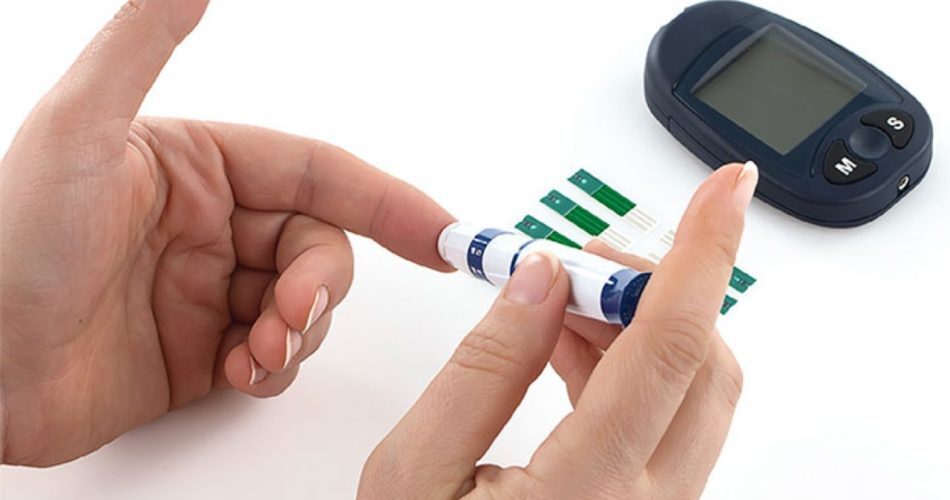A Quick Guide on How to Manage Your Diabetes in Times of Emergency
Living with Diabetes is a lifelong journey. This disease has no cure but it can be managed. However, when Covid-19 started to wreak havoc in our world, the way we live had changed.
Gone were the days where you could easily drop by at your doctor’s clinic for a check-up. A quick visit to the pharmacy could be a great risk for infection most especially for diabetics.
The level of preparedness is brought into a new light. Amidst this global pandemic and other natural disasters, these emergency situations are a challenge not just to anyone but most especially to a person living with a potentially life-threatening disease such as diabetes.
Educating yourself and your family about diabetes is essential. Knowing the various types of diabetic symptoms does not only mean preventing health problems but it could be lifesaving as well.
An example of notable symptoms pointing to low blood sugar or hypoglycemia is the feeling of intense hunger, sweating, fainting, or even worse going into shock.
Hypoglycemia is a very reversible complication seen in diabetics. This highlights the importance of education and preparation in times of emergencies.
Whether the situation is expected like a typhoon or a foreseeable evacuation to a safer place or unexpected disasters such as earthquake and flash floods, a person living with diabetes should always have a diabetes kit.
Creating a My Diabetes Emergency Plan is lifesaving. This was first launched in the year 2006 after Hurricane Katrina destroyed many homes in New Orleans. In the Philippines, we too have equivalents of such terrible natural calamities as Ondoy and Yolanda.
Listing a checklist of all the essential items a person living with diabetes should need when an emergency arises can be lifesaving. Writing down a checklist is not enough. Preparing it and taking it anywhere with you when you travel is certainly a must.
My Diabetes Emergency Kit Checklist
List the following information:
- The type of diabetes you have
- All of your medical conditions, allergies, and prior surgeries
- All medications
- Previous diabetes medications and reason for discontinuation
- Contact information for all your health care professionals and at least two emergency contacts
- Letter from your diabetes health care professionals with the most recent diabetes medication regimen (especially if taking insulin), health insurance card, etc.
- Most recent laboratory results (especially HbA1C, kidney, and liver tests)
Mga kailangan na impormasyon
- Uri ng Diabetes na mayroon ka
- Lahat ng kondisyong medical, mga allergy at mga naunang operasyon
- Lahat na mga gamut
- Nakaraang mga gamut sa diabetes at dahilan para sa pagtigil
- Impormasyon sa pakikipagugnay ng inyong mga doctor at 2 emergency contacts
- (Liham mula sa inyong doctor tungkol sa inyong kamakailang mga gamut sa diabetes)
- (Kamakailang mga laboratorya tulad ng A1C)
Medical supplies:
- A 30-day supply of all medications for diabetes and all other medical conditions
- Insulin and severe hypoglycemia emergency therapy (glucagon pen)
- A glucose meter with extra batteries for blood glucose monitoring
- A cooler that can fit the following: 4 re-freezable gel packs and insulin pens
- Empty plastic bottles or sharps container for syringes, needles, and lancets
- Any carbohydrate source in case of hypoglycemia (for example 200 ml juice, regular soft drinks, sugar, or hard candy)
- First aid supplies such as bandages, cotton swabs, dressings, and topical medications (antibiotic ointments or creams) should be included.
Mga supply at medisina
- 30 days na supply ng gamot para sa diabetes at iba pang mga condisyong medical
- Insulin at malubhang hypoglycemia therapy tulad ng glucagon pen
- Isang glucose meter na may labis na mga baterya para sa pagsubaybay sa glucose sa dugo
- Isang palamigan na maaring magkasya sa mga sumusunod: 4 na re-freezable gel pack at insulin pens
Food and Water:
- A 2-day supply of nonperishable food (canned goods and noodles)
- At least a 3-day supply of bottled water
In times of emergency, it is very important to always plan and to never forget to take action.
Preparedness in times of emergency is key but what are some conditions related to diabetes that could be an emergency?
- Diabetes Ketoacidosis
- Diabetic Hyperglycemic Hyperosmolar Syndrome
- Hypoglycemia
Diabetic Ketoacidosis (DKA) What is This and Why should I be Concerned?
Diabetic ketoacidosis is a medical condition where the body creates ketone during starvation states where the body is deprived of glucose due to insulin deficiency.
This happens when the body doesn’t have enough insulin to make use of the glucose that is needed by the cell for it to function. To adapt, the body breaks down fat as a substitute source of energy. The process of burning fat, this process leads to the production of ketones.
Ketones can be particularly harmful in the body since it makes it more acidic. Ketones are also a helpful warning sign that tells you that your diabetes is poorly controlled.
High levels of ketone are toxic to the body. Diabetics with high levels of ketone can develop diabetic ketoacidosis. Untreated DKA can lead to a diabetic coma (losing consciousness for quite some time) and even worse, death.
Who can get Diabetic Ketoacidosis?
Anyone with diabetes can suffer from DKA. It is more common in patients with Type 1 who cannot produce insulin. However, it still can happen in people with Type 2 although this a rare occurrence.
What causes Ketone Formation?
There are 3 reasons why a person may have moderate or large amounts of ketones in their body:
- Not having enough insulin into the body
DKA is typically seen in Type 1 diabetics since they are unable to produce their own insulin. For Type 2 diabetics who are on insulin, you may have ketone formation if you did not inject enough insulin.
There are also some instances when you are sick, the body’s demand for insulin increases, and your body cannot compensate for such demand.
- Not having enough food intake
Even normal individuals without diabetes, can have ketone formation when they go on prolonged fasting and without food intake.
This can also happen when a person is sick and this leads to a poor appetite for several hours to days. Both situations can lead to high ketone levels.
- Having low blood glucose due to medications
When a diabetic injects insulin and fails to eat on time this results in high ketone levels. Remember it is very important to follow your doctor’s instructions and to have a regular eating pattern as guided by your dieticians.
What should I watch out for and what are the warning signs of DKA?
The course of DKA is typically a slow one. But when clear symptoms such as vomiting occur this would mean that in several hours you could be in a critical condition. Remember having high ketone levels means an emergency!
There are a few warning signs a diabetic should watch out for. These usually develop over 24 hours and these include the following:
- Frequent urination
- Increasing thirst
- High blood sugar levels
- High ketone levels in the urine
When your blood sugar continues to be uncontrolled, the following symptoms will appear:
- Dry skin
- Having the feeling of being very tired
- Nausea, persistent vomiting, or abdominal pain
- Difficulty in breathing
- Your breath smells fruity in odor
- Confusion with difficulty to concentrate and paying attention
When you have any of the symptoms above, you should contact your doctor RIGHT AWAY or head to the nearest medical facility to be checked. Like with any emergency, Diabetes Ketoacidosis should be dealt with urgency.
What conditions bring about Diabetic Ketoacidosis?
DKA can occur during the following situations:
- Brought about by situations needing increased insulin requirements most especially when you have uncontrolled blood sugar
- During illnesses such as pneumonia, urinary tract infection, and other diseases
- Not taking the correct doses of insulin
- Not receiving insulin shots at all
Can I check for ketones at home?
Detecting ketones by doing a simple urine test using a test strip can be done in the comforts of your own home. You may ask your friendly doctors when the proper time to do so and how to test for ketones yourself.
Most clinicians would advise you to check your urinary ketone levels when your random blood glucose is equal to or is more than 250 mg/dl. This can be done every 4 to 6 hours.
Another situation where you can frequently check your ketone levels is when you have a cold or the flu. Lastly, it is important to check your ketones once you have any of the following DKA symptoms mentioned above.
If your locality does not have any ketone strips available, you can have this done by going to your nearest laboratory and submitting a urine sample.
What do I do when I find high levels of ketone in my urine?
As a general rule, when you find moderate amounts of ketone in your urine more than once, call your health care provider RIGHT AWAY.
When should I call my doctor or head to the nearest hospital or healthcare facility?
Call at once if you have at least ONE the following:
- When you have high levels of ketones in your urine
- When your blood glucose is >250mg/dl and you have high levels of ketones in your urine.
- When you have high levels of ketones in your urine and are having nausea, abdominal pain, or more than 2 episodes of vomiting,
How to prevent DKA from happening?
After knowing what is there to know about DKA, the next question would be, is there a way to prevent diabetic ketoacidosis and other diabetes complications from happening?
- Monitor your blood sugar level.
Monitoring your blood sugar levels regularly would mean taking your blood sugar once a day or as often as 4 times a day depending on the recommendations of your doctor. With watchful monitoring, this is one way to ensure that your blood sugar range is within target levels.
- Adjust your insulin dosage as needed.
Your diabetes management particularly insulin dosing should be centered on a good partnership with you and your doctor. It should focus on you, your blood sugar level, what you eat, how active you are, and whether or not you are ill.
With proper education and help from your doctor, you can create individualized treatment plan.
- Check your ketone level during the times when you are stressed or sick.
Once you discover that your ketone level is moderate or high, contact your doctor right away or seek emergency care at the nearest medical health facility.
- Preparedness and acting quickly
With regular sugar monitoring, once you have blood sugar levels 250 mg/dl and above and you have high levels of ketone in your urine, act fast. You should seek emergency care!
Living with diabetes is a lifelong journey and diabetes complications can be scary. Being properly educated and proactive in managing your disease are key steps in taking good care of yourself.
Remember to be always prepared for any emergency and follow your diabetes treatment plan earnestly.
References:
- Kasper, Dennis L., et al. Harrison’s Principles of Internal Medicine. 20th edition. New York: McGraw Hill Education, 2018.
- American Association of Clinical Endocrinology, accessed 11 April 2021, https://www.aace.com/disease-and-conditions/diabetes/are-you-prepared-manage-your-diabetes-emergency
- American Diabetes Association, accessed 11 April 2021, https://www.diabetes.org/diabetes/complications/dka-ketoacidosis-ketones
- Mayo Clinic, accessed 12 April 2021 https://www.mayoclinic.org/diseases-conditions/diabetic-ketoacidosis/symptoms-causes/syc-20371551



